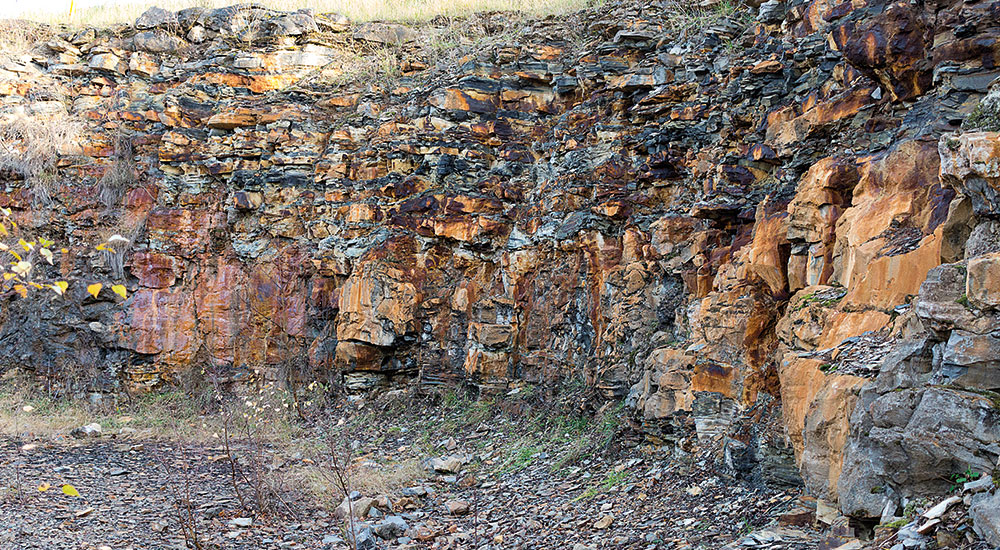
It was formed by clay particles that were slowly deposited (around 5 mm every thousand years) at the bottom of a sea. Organic material was also deposited on the sea bed with the clay. The high organic content of the shale meant that it could be used as a fuel for lime-burning. Dotted around the quarry you see traces of lime-burning, including old kilns and red mounds of burned shale.
At the bottom of the eastern wall is a dark grey limestone which, if you look closely, is full of fossils. These fossils consist mainly of small arthropods (trilobites). Other areas of the quarry also contain fossils, and these show the diversity of life that existed in the sea.
NOTE! Remember that these rocks have been here for many millions of years and that many people want to experience this location after you. Please do not take rocks away, do not remove loose rocks from the quarry faces, and do not use a geology hammer to break rocks.


